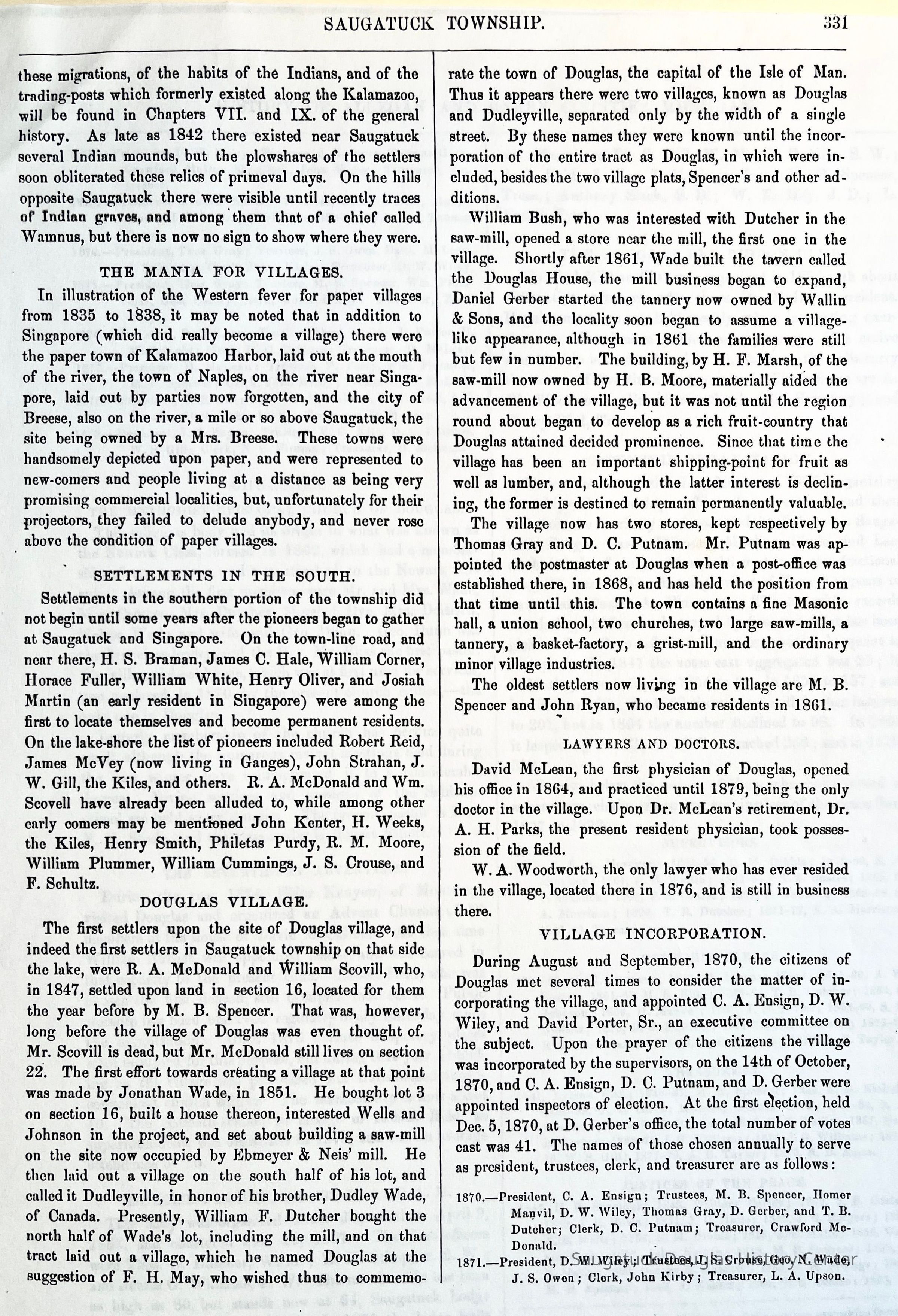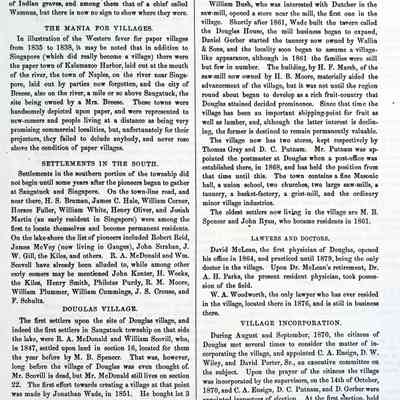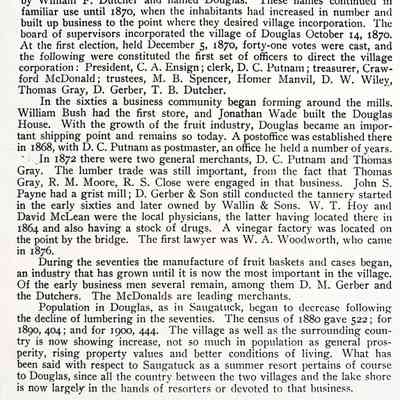Douglas' founding

“History of Allegan and Barry Counties 1880”, page 331
The first settlers upon the site of Douglas village, and indeed the first settlers in Saugatuck township on that side the lake, were R. A. McDonald and William Scovill, who, in 1847, settled upon land in section 16, located for them the year before by M. B. Spencer. That was, however, long before the village of Douglas was even thought of. Mr. Scovill is dead, but Mr. McDonald still lives on section 22. The first effort towards creating a village at that point was made by Jonathan Wade, in 1851. He bought lot 3 on section 16, built a house thereon, interested Wells and Johnson in the project, and set about building a saw-mill on the site now occupied by Ebmeyer & Neis' mill. He then laid out a village on the south half of his lot, and called it Dudleyville, in honor of his brother, Dudley Wade, of Canada. Presently, William F. Dutcher bought the north half of Wade's lot, including the mill, and on that tract laid out a village, which he named Douglas at the suggestion of F. H. May, who wished thus to commemorate the town of Douglas, the capital of the Isle of Man. Thus it appears there were two villages, known as Douglas and Dudleyville, separated only by the width of a single street. By these names they were known until the incorporation of the entire tract as Douglas, in which were included, besides the two village plats, Spencer's and other additions. William Bush, who was interested with Dutcher in the saw-mill, opened a store near the mill, the first one in the village. Shortly after 1861, Wade built the tavern called the Douglas House, the mill business began to expand, Daniel Gerber started the tannery now owned by Wallin & Sons, and the locality soon began to assume a village-like appearance, although in 1861 the families were still but few in number. The building, by H. F. Marsh, of the saw-mill now owned by H. B. Moore, materially aided the advancement of the village, but it was not until the region round about began to develop as a rich fruit-country that Douglas attained decided prominence. Since that time the village has been an important shipping-point for fruit as well as lumber, and, although the latter interest is declining, the former is destined to remain permanently valuable. The village now has two stores, kept respectively by Thomas Gray and D. C. Putnam. Mr. Putnam was appointed the postmaster at Douglas when a post-office was established there, in 1868, and has held the position from that time until this. The town contains a fine Masonic hall, a union school, two churches, two large saw-mills, a tannery, a basket-factory, a grist-mill, and the ordinary minor village industries. The oldest settlers now living in the village are M. B. Spencer and John Ryan, who became residents in 1861.

